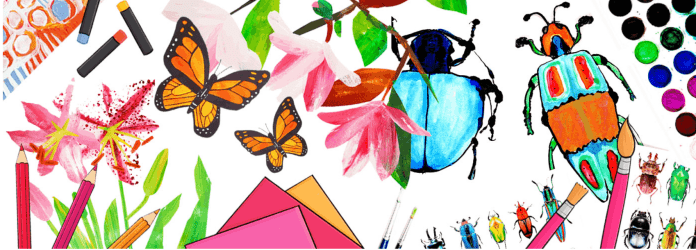Introduction
Kindergarten marks the beginning of a child’s formal education journey, and while early literacy and numeracy skills are vital, the significance of art classes for kindergarteners should not be underestimated. Art classes play a pivotal role in fostering creativity, enhancing cognitive development, and laying the foundation for a holistic educational experience. In this article, we explore the various aspects of why art classes are crucial for kindergarteners and how they contribute to the overall growth and development of young minds.
Nurturing Creativity from the Start
Art classes provide a canvas for kindergarteners to unleash their creativity. Through drawing, painting, and other artistic activities, children learn to express their thoughts, feelings, and ideas in a visual form. The freedom to choose colors, shapes, and subjects empowers them to develop a sense of individuality and self-expression from an early age. Nurturing creativity at this stage lays the groundwork for innovative thinking and problem-solving skills in the future.
Enhancing Fine Motor Skills
Engaging in art activities requires the use of fine motor skills, which involve the coordination of small muscles in the hands and fingers. Holding a paintbrush, manipulating clay, or cutting paper during art classes helps kindergarteners refine their fine motor skills. These activities contribute to the development of hand-eye coordination, dexterity, and control, setting the stage for improved writing skills as they progress through their academic journey.
Encouraging Cognitive Development
Art classes for kindergarteners are not just about creating visually appealing masterpieces; they also stimulate cognitive development in young minds. When children engage in artistic activities, they make decisions about colors, shapes, and compositions. These choices enhance critical thinking skills, spatial awareness, and the ability to analyze visual information. Art classes become a playground for cognitive exploration, promoting intellectual growth in kindergarteners.
Fostering Social and Emotional Development
Art classes provide a social setting where kindergarteners can collaborate, share ideas, and express emotions in a supportive environment. Group art projects encourage teamwork and communication, fostering social skills and the ability to work cooperatively with peers. Additionally, art allows children to express and understand their emotions, promoting emotional intelligence and self-awareness from an early age.
Building Confidence and Self-Esteem
The open-ended nature of art activities empowers kindergarteners to make creative choices independently. Successfully completing an art project, whether it’s a colorful painting or a crafted sculpture, boosts a child’s confidence and self-esteem. Art classes celebrate the process of creation, emphasizing that there are no right or wrong answers in the world of art. This mindset instills a positive attitude toward learning and exploration.
Introducing Cultural and Historical Awareness
Art classes serve as a gateway to introducing kindergarteners to various forms of artistic expression from different cultures and historical periods. Exploring diverse art forms exposes children to a rich tapestry of human creativity throughout history. This exposure not only broadens their cultural awareness but also instills an appreciation for diversity and individual perspectives.
Connecting Art with Other Subjects
Integrating art into the kindergarten curriculum creates connections with other subjects, enriching the overall learning experience. Art projects can be designed to complement themes in science, mathematics, or literature. For example, creating artwork inspired by nature can enhance the understanding of science concepts, while illustrating a story promotes literacy skills. These interdisciplinary connections make learning more engaging and meaningful for kindergarteners.
Instilling a Love for Learning
Art classes contribute to the development of a positive attitude toward learning. The joy and excitement that come from creative expression in art create a love for the learning process itself. Kindergarteners discover that learning is not confined to traditional subjects but extends to the limitless realms of imagination and self-discovery. This early love for learning becomes a foundation for a lifelong pursuit of knowledge.
Providing a Safe Space for Expression
Art classes offer kindergarteners a safe and non-judgmental space for self-expression. Children may use art as a means to communicate thoughts and feelings that they might find challenging to express verbally. This emotional outlet encourages a sense of openness and trust, creating an environment where kindergarteners feel heard and understood.
Supporting Individual Learning Styles
Every child learns differently, and art classes cater to diverse learning styles. Visual learners benefit from the vivid colors and shapes, kinesthetic learners thrive in hands-on activities like sculpting, and auditory learners can engage with discussions about artworks. Art classes recognize and celebrate these individual learning styles, ensuring that each kindergartener can express themselves in a way that resonates with their unique strengths.
Conclusion
In the kaleidoscope of early childhood education, art classes emerge as a vibrant and essential component. Beyond the joy of creating artwork, these classes contribute to the comprehensive development of kindergarteners. From fostering creativity and enhancing cognitive skills to promoting social and emotional well-being, art classes create a multifaceted educational experience. As educators and parents alike recognize the profound impact of art on young minds, the role of art classes in shaping the future of our children becomes increasingly evident.
